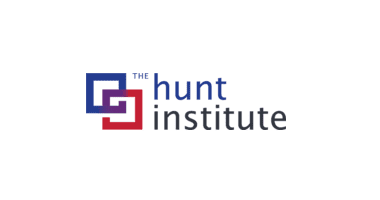Schools Might Be Closed, But Families Still Deserve Data on Student Learning
Nearly 9 in 10 parents are worried about their children falling behind academically due to coronavirus-related school closures, according to recent Ed Trust polling data. And whereas typically, families could rely on state assessments and accountability data required on district and school report cards to gauge their child’s progress and how well their school is supporting that learning, the U.S. Department of Education issued waivers exempting states from administering state assessments and having to provide much of this data for the 2019-2020 school year. The department, however, has not waived state and local report cards writ large. School report cards include a wide range of information beyond assessment and accountability data, such as graduation rates, school climate surveys, and school expenditures — all critical to shining a spotlight on educational inequities and helping families, advocates, and decision-makers see how schools are serving all students during this unprecedented time.
Given that most schools closed three-quarters of the way into the school year, they still have data on many academic and non-academic indicators that would provide much needed transparency:
- Per-pupil expenditures: Transparent per-pupil spending is a critical tool for families, advocates, and decision-makers to use to determine whether state and local funding systems are equitable. It is critical that states continue to work to meet this requirement, which could help provide invaluable information about the impact of the looming recession on school budgets.
- Social, emotional, and academic development: Many states administer surveys to assess school climate and social, emotional, and academic development throughout the school year. If states and districts administered these surveys, they should adjust the reporting window and report results on their report cards.
- Graduation: Graduation data for 2020 should be collected and eventually published, despite the coronavirus pandemic. Several states have already announced modified graduation requirements (e.g., removing requirements to complete work-based learning) to help students graduate on time. Even with these modifications, states should continue to report graduation data to make report cards more consistent and useable from year to year.
- Resource equity: States have critical equity data, including participation in advanced high school coursework, preschool enrollment, suspension rates, teacher qualifications, and chronic absenteeism. Massachusetts, for example, is considering measuring and reporting on attendance and chronic absenteeism through March 2.
- School improvement plans: States must reserve 7% of their Title I funds to support schools identified for comprehensive and targeted support. Although the list of identified schools will remain the same for the 2020–2021 school year, states should continue reporting on how they are funding and supporting those schools.
The limited waivers around assessments and accountability are not an excuse to turn back the clock on public reporting. For many years, data about how well schools and districts were supporting students from low-income backgrounds, students of color, students with disabilities, and English learners was never publicly reported and was hidden. Fortunately, beginning with the passage of the No Child Left Behind Act in 2001, the transparency landscape changed drastically. NCLB required annual reporting on a variety of measures, including access to highly qualified teachers and student results on statewide assessments. The Every Student Succeeds Act of 2015 maintained these requirements for states and districts to publish annual report cards and even added new measures, such as per pupil expenditures data for each school. It is access to this information about school performance that families, advocates, and decisionmakers rely on to make critical decisions about which schools and students may need additional support and which should be applauded for serving all students well.
Moving forward, the lack of state assessment results will likely cause barriers for school systems who rely on this data to measure student and school progress. Ed Trust will continue to support families, advocates, and decision-makers on how to best identify student performance and target resources as students return to school. For now, however, states should maintain their typical report card publication timeline (usually in the fall of each school year) and note that missing data or modified measures are the result of COVID-19 disruptions.
No one knows what next year holds. There may be intermittent closures, additional virtual learning, or other unanticipated changes to schooling as we await the end to this crisis. Still, states and districts, should continue to collect and report on as much data as possible — that could include climate surveys administered remotely, consistent measures of student “attendance” and engagement, and student performance information. Data is a good thing. And the more we have, the better our students will be for it.





